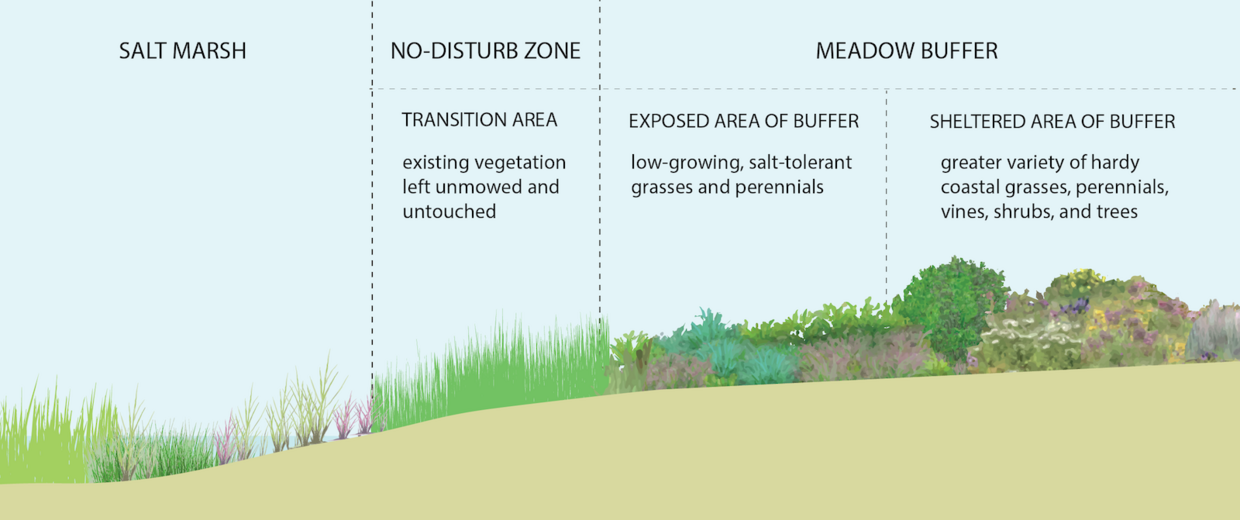This profile illustration depicts the recommended transition of plant types from the edge of the salt marsh to the upland buffer. Closest to the salt marsh, existing vegetation should be left untouched in an area 3-4 feet wide as a no-disturb zone. This transition area also allows access to meadow plantings (without having to step in the marsh), and the existing vegetation will capture sediments that could be washed into the marsh before newly installed plants grow and fully cover exposed soils. In addition, this area provides space to allow for the potential expansion of salt marsh grasses as sea levels rise. Salt marsh grasses thrive with inundation, making them better able to disperse wave and tide energy than upland plants that will eventually die out as tides reach higher. Finally, leaving this area undisturbed will provide better protection from storm damage, while saving time and money needed to maintain and replace unsuccessful upland plants.
The area just beyond the no-disturb zone (exposed area of buffer) is where plants must be able to tolerate exposure to wind, salt spray, and occasional splashover and storm surge from extreme storm events. Grasses and perennials are encouraged here since their low growth prevents shading of nearby sun-loving salt marsh species in the summer, and their die back at the end of the growing season reduces the potential for damage during winter storms.
The most landward portion of the meadow buffer (sheltered area of buffer) is more protected from wind, salt spray, splashover, and potential storm surge. Here, the salt marsh buffer can host a greater variety of plant species, including particular shrubs and trees, which when set back will not threaten salt marsh species with shading impacts or suffer damage from wind, salt spray, or winter storms.
Back to Landscaping Near a Salt Marsh: Planting a Meadow Buffer
Back to Sample Landscape Plan for a Meadow Buffer to Salt Marsh
Back to Coastal Landscaping Home
